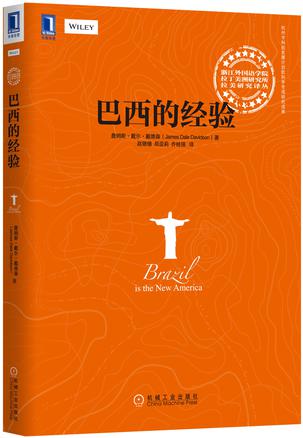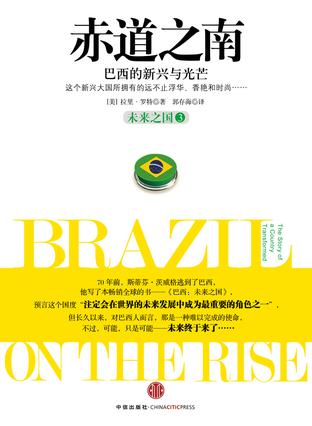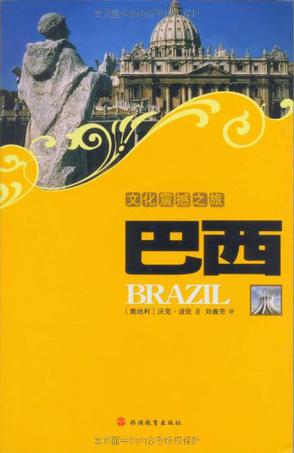-

家庭纽带
编辑推荐:
★ 诺贝尔文学奖得主奥尔罕·帕慕克、布克奖得主爱尔兰著名作家科尔姆·托宾倾力推荐
★ 巴西当代经典作家之一,被誉为自卡夫卡之后最重要的犹太作家,也是拉美文坛真正独树一帜的作家克拉丽丝·李斯佩克朵关注女性尤其是家庭主妇的命运和内心世界的经典短篇集
★《家庭纽带》于一九六〇年出版,评论界一致好评,第二年获得雅布提文学奖短篇小说类大奖,克拉丽丝·李斯佩克朵的挚友费尔南多·萨比诺称“(这本书)完全是巴西有史以来出版的最好的短篇小说集”。
《家庭纽带》 (短经典精选)
在歧路之上,她堕入了女性的命途
卡夫卡之后重要的犹太作家 把写作内化为终极命运
克拉丽丝·李斯佩克朵 经典短篇集
《家庭纽带》出版于一九六〇年,收录克拉丽丝·李斯佩克朵构思精彩的十三个故事,讲述了下面这些拙笨生活的人物:安娜一向将自己与家人的生活安排得井井有条,然而,当她看到瞎子嚼口香糖时,她所认定的“真实”全然解体;长久幽禁在家庭生活中的女性无意或有意地醉酒,从而完成对丈夫或男性权威的挑战;老妇人是一家人一年一聚的理由,但几乎无人真正关心她,她只能用自己的方式表示蔑视;还有一只仓皇逃逸的母鸡,只有在夜深人静时,才能在厨房的空地中,以非常笨拙的方式,表达属于自己的小小真实……
-

十封信--写给胆敢教书的人
当我们发现保罗·弗雷勒将为本书系写作时,我们万分荣幸与激动,觉得应该为这本书写篇简短的前言。这是四年前的事,现在这一时刻到来了… …对这个影响到我们的职业生涯、友谊和爱的人,我们能写点什么呢?对这个我们认为永远不应逝去,而现在却只能在精神上、文本上、教学中存在的人,我们能写点什么呢?我们能公正地写出前言吗?保罗希望我们说些什么? 不可能回答的问题,只有时间才能回答——尽管我们知道弗雷勒幽默,对这个世界常怀痛切之感,然而他还是在1997年5月2日逝世了。我们不难察觉到他淡泊名利,对自己的作品和名字被盗用一笑了之。我们还对那些毫不迟疑地兜售弗雷勒“方法”的学术骗子加以嘲笑,这亦非难事。有时很难相信那些打着弗雷勒的幌子来标榜自己的人的话。自然,弗雷勒独有的做法是,对这些新贵,他不会厌恶,仅仅是笑笑并且祝福他们。他忙于工作,没有时间去澄清这类“鸡毛蒜皮的”事情。在雪莉的办公室里有一则弗雷勒语录,转引自唐纳多·马塞多:“漠视你的敌人。”她时常感到很难做到,因为受《旧约》“以眼还眼”的训诫影响太深(这也是该语录在办公室中引人注目的原因)。当然,对那些接受基督教和其家庭价值(familyvalue)的人而言,笑对恶人并非难事!上帝保佑那些能把另一边的脸颊也凑过去的人。 保罗很早就知道,时间更应该花在改变、教化这个世界上;抱怨是没有意义的。这并不是说保罗是个“常败将军”(毕竟,他坐过牢,不久又被巴西驱逐出境)。但他坚信,唯一正确的做法是,适应学生的既有经历,用彻底的爱去帮助他们。要理解弗雷勒的思想,关键在于找到既有经历与彻底的爱的交集。保罗在这两者的交集里创造的奇迹不仅为教育学提供了模式,而且为我们的生活指明了方向。 没有人能照搬弗雷勒,所谓有同情心的教育法也不足以。保罗呼唤的是承诺、政治参与和行动:毕竟,教学是一种政治行动,一种爱和洞察的行动。预售(prebought)的录像带或车间无法让教师开展彻底的教学,只有严肃的学者和为社会正义承担义务的人才可能成为“弗雷勒式”教师。我们必须牢牢记住,弗雷勒意义上的同情心不是做出来的,教育孩子们、给他们授权,仅有同情心是不够的。孩子们需要好老师来教育他们,这些老师从不逃避教育的责任,给学生制订日程并在必要时纠正学生。弗雷勒坚信,这是民主的教学。正是这样的教育给了学生权利并把他们从压迫中释放出来。 当以上短文从键盘上流出时,弗雷勒给了我们无限的温情,我们是多么感激与思念他啊。在本书付梓时,我们要对他说:情迷和再见(Obrigado and tchau)。我们知道,他将作为诤友永存于世。我们还要向他深爱的尼塔献上我们最深的爱和支持,在下一个千年中,她将继续为她的事业而奋斗。 本书为巴西著名教育家保罗·弗雷勒写给即将成为教师的青年人的十封短信,阐释其风行世界的弗雷勒教学法,告诉人们,作为文化工作者,教师能做的,不仅仅是教给学生读和写,更应建立起全新的教学关系,把教育活动当成是重要的政治实践来从事,让学生自我教育,参与知识的创造。 -

Genesis
“In Genesis, my camera allowed nature to speak to me. And it was my privilege to listen.” —Sebastião Salgado On a very fortuitous day in 1970, 26-year-old Sebastião Salgado held a camera for the first time. When he looked through the viewfinder, he experienced a revelation: suddenly life made sense. From that day onward—though it took years of hard work before he had the experience to earn his living as a photographer—the camera became his tool for interacting with the world. Salgado, who “always preferred the chiaroscuro palette of black-and-white images,” shot very little color in his early career before giving it up completely. Raised on a farm in Brazil, Salgado possessed a deep love and respect for nature; he was also particularly sensitive to the ways in which human beings are affected by their often devastating socio-economic conditions. Of the myriad works Salgado has produced in his acclaimed career, three long-term projects stand out: Workers (1993), documenting the vanishing way of life of manual laborers across the world, Migrations (2000), a tribute to mass migration driven by hunger, natural disasters, environmental degradation and demographic pressure, and this new opus,Genesis, the result of an epic eight-year expedition to rediscover the mountains, deserts and oceans, the animals and peoples that have so far escaped the imprint of modern society—the land and life of a still-pristine planet. “Some 46% of the planet is still as it was in the time of genesis,” Salgado reminds us. “We must preserve what exists.” The Genesis project, along with the Salgados’ Instituto Terra, are dedicated to showing the beauty of our planet, reversing the damage done to it, and preserving it for the future. Over 30 trips—travelled by foot, light aircraft, seagoing vessels, canoes, and even balloons, through extreme heat and cold and in sometimes dangerous conditions—Salgado created a collection of images showing us nature, animals, and indigenous peoples in breathtaking beauty. Mastering the monochrome with an extreme deftness to rival the virtuoso Ansel Adams, Salgado brings black-and-white photography to a new dimension; the tonal variations in his works, the contrasts of light and dark, recall the works of Old Masters such as Rembrandt and Georges de La Tour. What does one discover in Genesis? The animal species and volcanoes of the Galápagos; penguins, sea lions, cormorants, and whales of the Antarctic and South Atlantic; Brazilian alligators and jaguars; African lions, leopards, and elephants; the isolated Zo’é tribe deep in the Amazon jungle; the Stone Age Korowai people of West Papua; nomadic Dinka cattle farmers in Sudan; Nenet nomads and their reindeer herds in the Arctic Circle; Mentawai jungle communities on islands west of Sumatra; the icebergs of the Antarctic; the volcanoes of Central Africa and the Kamchatka Peninsula; Saharan deserts; the Negro and Juruá rivers in the Amazon; the ravines of the Grand Canyon; the glaciers of Alaska... and beyond. Having dedicated so much time, energy, and passion to the making of this work, Salgado likens Genesis to “my love letter to the planet.” Whereas the limited Collector’s Edition is conceived like a large-format portfolio that meanders across the planet, this unlimited book presents a selection of photographs arranged in five chapters geographically: Planet South, Sanctuaries, Africa, Northern Spaces, Amazonia and Pantanal. Each in its own way, this book and the Collector’s edition—both edited and designed by Lélia Wanick Salgado—pay homage to Salgado’s triumphant and unparalleled Genesis project. The world premiere of Sebastião Salgado: Genesis will open at the Natural History Museum in London on April 11, 2013. The exhibition builds on the Museum’s reputation as the home of the planet’s best nature photography. For further information and to book tickets please go to www.nhm.ac.uk/salgado.Additionally, from May 14th, a special portfolio of plantinum prints fromGenesiswill be shown atPhillipsHowick Placegallery inLondon. Worldwide venues for the Genesis exhibition: The Natural History Museum, London, UK - April 11 through September 8, 2013 The Royal Ontario Museum, Toronto, Canada - May 2 through September 2, 2013 Ara Pacis Museum, Rome, Italy - May 15 through September 15, 2013 Jardim Botânico, Rio de Janeiro, RJ, Brazil - May 28 through August 25, 2013 Musée de l’Elysée, Lausanne, Switzerland - September 21, 2013 through January 12, 2014 La Maison Européenne de la Photographie (MEP), Paris, France - September 25, 2013 through January 5, 2014 SESC Belenzinho, São Paulo, SP, Brazil - September 9 - November 2013 -

巴西的经验
长眠于巴西大地的奥地利作家斯蒂芬?茨威格曾经预言:“巴西是一片未来之土,它也将永远处于未来。” 如今,这个与中国一同崛起的金砖之国,正努力走出这一宿命,引起全世界的关注。 这其中,有投资嗅觉最灵敏的美国人,并不失时机地推出了这样一本研究巴西与美国比较优势的书。《巴西的经验》找到了巴西走出历史宿命的内在逻辑,同样也为出海寻求机遇的中国资本提供了另一种选择。 -

赤道之南
这是一片诱人的土地,这里有世界闻名的桑巴舞、足球、超级名模和迷人的热带海滩,这就是第一代葡萄牙探险者眼中的“人间天堂”——巴西。一年一度的狂欢节以其“沉醉不知归路”的狂欢而闻名天下。亚马孙雨林更被视为地球上最宝贵的资源之一。 然而,上天的恩赐并不总是带来国家繁荣:20年前,巴西不仅负债累累,而且刚刚摆脱一个厉行新闻审查和镇压异见者的军事独裁政权。如今,巴西已是世界第八大经济体,其民主制度也充满勃勃生机。不惟如此,巴西还实现了能源自主。本世纪最大油田的发现应该使巴西很快就荣登主要能源出口国之列。代表新世界强国崛起的“金砖四国”一词,首字母就来自巴西。随着2016年奥运会和2014年足球世界杯的成功申办,巴西终于准备在国际舞台上一展身手。 是什么促成了巴西的这种巨变呢? 《纽约时报》记者罗伟林以其渊博的知识和富有质感的笔调引领我们准确地见证了巴西惊人的复兴。作为《纽约时报》驻里约热内卢分社社长,罗伟林近水楼台,目睹了巴西近年来一系列的惊人变化。通过采访政界、商界、文化界和宗教界的每一位领袖,他敏锐地记录了巴西快速而剧烈的变化,令人耳目一新。 由于巴西继续保持其快速的崛起,因此这本权威性著作将帮助你了解巴西——这个未来数年将成为国际舞台主角的国家。 -

文化震撼之旅
《文化震撼之旅:巴西》摒弃了对巴西种种先入为主的偏见,向您展现了一个充满活力、多姿多彩的美丽的巴西,该书以平易近人的风格介绍了巴西生活的各个方面,为您提供了一本面面俱到、真实实用的指南。《文化震撼之旅:巴西》将带领您游览经济实力城市圣保罗、海滨城市里约热内卢和郁郁葱葱的热带雨林。除了对用餐礼仪和职场环境的详细介绍之外,书中还有关于如何办理签证、租房、考驾照等方面的宝贵信息,另外,您还会了解到巴西人友善开朗的性格,知道如何使用巴西的语言,如何适应喧闹的人群?通过《文化震撼之旅:巴西》,您不仅能学会如何生存,还能尽享游历巴西的独特之处,